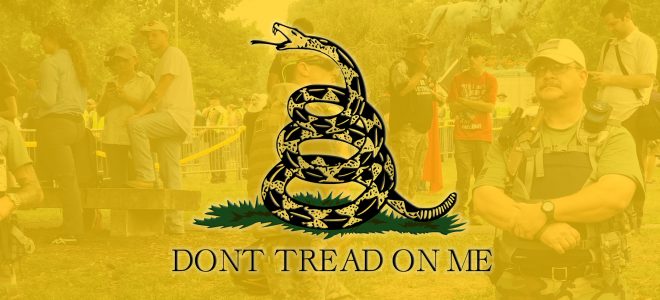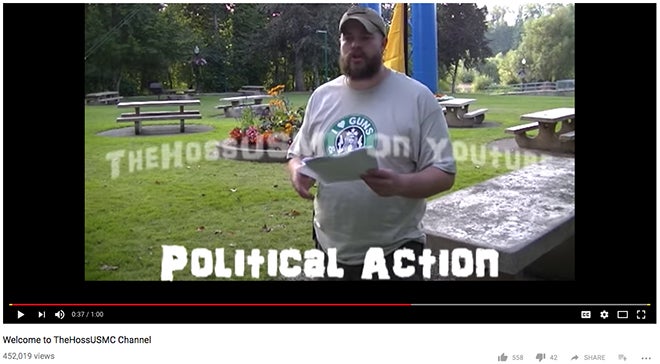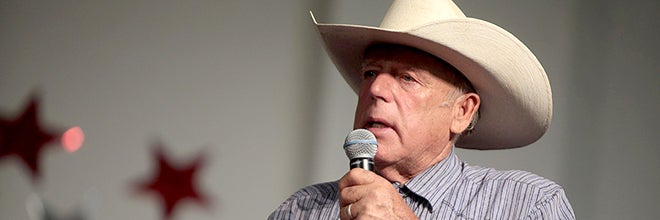

Dr. Isaac Castellano earned a Ph.D. in Political Science from the University of Kentucky in 2013. Dr. Castellano’s research examines political violence, including civil war interventions, environmental security, and militias. As a lecturer in the Department of Political Science at Boise State University, he teaches courses in international relations.
A Survey of the American Patriot Movement
As the gap between the major parties in the United States continues to grow, a sizable portion of both parties report being afraid, angry, and frustrated with the opposing party. Complicating matters is the trend that the partisan differences are the greatest among those who are most active in politics, so that those who are most outspoken and extreme in their views are also the ones most likely to be active. This development raises questions as to how the political process can function with the primarily actors being more extremist.
How to deal with the extremists is a great subplot of the larger partisan divide among Americans. One of these extreme groups that has inspired deep emotional responses from all corners of society has been the Patriot Movement. According to the Southern Poverty Law Center (SPLC), an anti-racist legal nonprofit known for its civil rights litigation efforts, during President Barack Obama’s two terms in office, the movement peaked in 2012, with an estimated 300,000 Patriot Movement members across 1,360 groups active in 2012, all with varying degrees of organizational frameworks and virtually no central leadership.
Despite the lack of central leadership, the movement maintains strong ideological commonalities. It is rooted in the belief that the U.S. federal government has grown too large and too powerful, and that at some point it will abuse that power in order to eliminate or reduce the constitutionally granted rights Americans enjoy. Members of the movement articulate a clear opposition to policies they view as placing restraints on individual freedoms, and while much of their focus has been on issues such as taxes, guns, and private property rights, the overall scope of the movement is wide ranging. This movement is also quite active. Patriot groups have taken numerous steps to advance their agenda, notably organizing multiple well-armed and trained militias for the stated purpose of intervening in instances of federal government overreach.
I had observed that the perceived threat and danger of the Patriot Movement often overshadows a current that runs through most of the groups in this movement, which is their commitment to civic engagement and improving their communities.Isaac Castellano
Growing Interest and Participation in Right Wing Politics
2016 was a banner year for media coverage and public awareness of the Patriot Movement, spurred in part by an expected Hillary Clinton victory in the presidential race, along with the national media coverage of the January 2016 armed takeover of the Malheur National Wildlife Refuge in Eastern Oregon and the subsequent public lands debate. Outlets such as the Guardian, Mother Jones, and Vice News, as well as major TV networks, devoted significant resources to covering this movement. The tone of some coverage was a mixture of morbid curiosity and outright dismay that such ideas could exist in present day America. Helping to frame this coverage was the movement’s main organized opposition, the SPLC, which considers the Patriot Movement a threat to public safety and more dangerous than Islamic-based terrorism. Given that both the FBI and the Department of Homeland Security actively monitor Patriot Movement groups, it is not an unfounded position as infamous events such as Ruby Ridge, Waco, and the Olympic Bombing in 1996 helped crystalize the dangers of the movement.
Despite these examples of growing interest in the far right, there has been limited scholarly attention given to people participating in this extreme form of civic engagement. Acknowledging this gap in current scholarship, I began to conduct research on the Patriot Movement in 2015. I was particularly interested in understanding the ways in which members of the Patriot Movement engage in civic participation. I had observed that the perceived threat and danger of the Patriot Movement often overshadows a current than runs through most of the groups in this movement, which is their commitment to civic engagement and improving their communities. I was curious about how and if the Patriot Movement’s deep-seated concerns with the status of individual rights and its conspiracy-fueled fear of a looming federal government intervention affected member’s civic behavior.
Democratic systems presuppose that there will be less of a need for armed resistance to achieve a desired political outcome, yet the Patriot Movement has long claimed their interpretation of the constitution and its subsequent implications for political behavior are preferred options for the masses, lamenting that most of the population are ‘lambs’ herded and controlled by a minority elite, left powerless without proper weapons, training, and political awareness. I thus began to question how these movement members were civically engaged. Did they hide away in the mountains, training for an impending federal intervention? Or did they attend local school board meetings and contact state legislators? Do they vote?
To distribute my survey to Patriot movement members, I enlisted the help of Ian Houston, whose YouTube channel TheHossUSMC boasts over 100,000 subscribers and over 21 million individual views.Isaac Castellano

Analyzing the Patriot Movement
To explore the connection between Patriot Movement membership and civic participation, I built a survey instrument that asked questions about involvement in the movement, as well as questions on political participation similar to national Pew Research Center questionnaires on civic engagement. To distribute my survey to Patriot movement members, I enlisted the help of Ian Houston, whose YouTube channel TheHossUSMC boasts over 100,000 subscribers and over 21 million individual views, includes dozens of videos that conduct product reviews on guns and prepper supplies, and covers political issues such as how to handle law enforcement when openly carrying a firearm. Video titles include “How I set up my Glocks” and “How to hide your guns in plain sight from your tyrannical government.” The videos are generally aimed to support and inform Patriot Movement members on political issues and products associated with the movement. Although not a celebrity, Houston could be characterized as a notable person within the Patriot Movement whose YouTube channel is likely to attract those interested in movement activities. In order to recruit people for my survey I met with Houston in September of 2015 at his home in Eugene, Oregon, where we filmed a short video together describing my survey and its purpose. He asked his viewers to complete my online survey, which was linked to the video. The video was viewed over 9,000 times, resulting in 476 completed surveys between September 17, 2015 and January 5, 2016.
To isolate the Patriot Movement respondents from the larger group of respondents who did not claim movement membership, I looked at those who reported belonging to a militia (176 respondents, or 37% of all responses) and those who claimed membership in the Oath Keepers (66 respondents/14%), a national Patriot Movement group. I compared this group to two samples of all eligible Americans surveyed by the Pew Research Center in two surveys, one in 2009 and another in 2013, that captured overall civic engagement at the national level.
The data indicates that Patriot Movement participants are much more likely to be politically engaged than the average American. Survey respondents spoke to a deep commitment to community and country. 90% indicated that they planned to vote in the 2016 presidential race, 72% of Patriot Movement respondents reported a 100% voting record in local and state elections, and 74% had a 100% participation rate in congressional and presidential elections. Looking to other forms of political participation, respondents overall had high rates of attending protests and contacting public officials. In sum, Patriot Movement members had a 2-to-1 lead on the average American in terms of overall political participation, which for the Pew poll included a longer list of political actions than what was included on my survey questions, indicating that the Patriot Movement members out-performed the general public on civic engagement even though they were asked about fewer types of political participation.
Table 1: Right Wing Political Participation vs. All Americans


As noted in Table 1, their participation in political activities was at a higher rate, relative to the broader population in the United States. Moving beyond political participation, respondents reported a high level of involvement in their communities beyond their Patriot Movement activity, including participating in food bank drives, school fundraisers, and activities to help prepare their communities for natural disasters. At the heart of their involvement was of course their deep-seated concern about federal government overreach, but also a deep commitment to their communities that reflected an ethos of civic engagement not reflected in the wider population.
Engagement with the Extremes
The high level of involvement in politics among Patriot Movement members should not be a surprise, as they are mobilized political actors with an action orientated ideology. Although some Patriot Movement members have crossed into political violence with acts of domestic terrorism, something that cannot be tolerated in a democracy, the wider movement’s commitment to community and civic engagement should serve as a wakeup call for those more moderate populations. Simply put, Patriot Movement members are out-participating the average American.
Two points emerge from this research that the average American should consider. First, the mere fact that Patriot Movement members are so active and engaged in improving their communities should inspire respect. They may be ideological extremists, but they are doing more in the name of civic engagement and political action than most. Second, they are filling the void left by those who are disillusioned, disengaged, and bewildered with the current political environment. The Trump Administration’s decision to shrink the Bears Ears National Monument, roll back gun regulations, and de-fund the Department of Homeland Security’s Countering Violent Extremism program geared toward combating far-right political violence are all key agenda items for the Patriot Movement. Although it is impossible to document a direct link between the extraordinary levels of civic engagement among Patriot Movement members and these policy gains, it would be unwise to assume the two are unrelated. After all, civic engagement tends to yield political influence. Those who dismay in these outcomes might take a moment to learn from the Patriot Movement membership’s example.